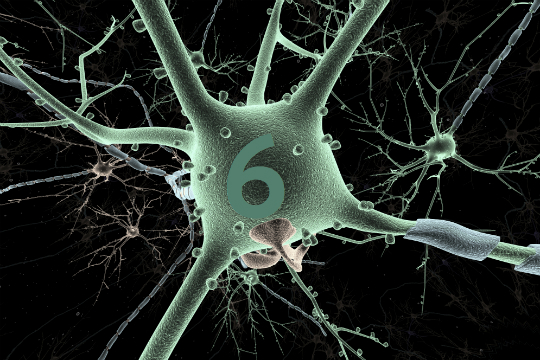How do we make learning stick? The CIPD's Ruth Stuart tackles the grey matter to give us an insight into how we might make that happen.
- Brain plasticity – that is, how much our brain connectivity, function and structure can change in response to learning – is possible throughout our lives. Our brains are most 'plastic' when we are younger, but analysis of the brains of jugglers and London cabbies shows a significant plasticity continues through adulthood.
- Neuroscientists have proved that some exercise can have beneficial effects on cognitive function – but not all. For example, a study of teenage learners showed a daily 30-minute exercise break improved their attention during lessons but a five-minute exercise break did not.
- Better understanding of our brains and how they seem to respond to uncertain rewards has helped inform software that helps turn almost any PowerPoint-based training session into a game in which learners compete in teams. Winning requires both learning and luck, creating a rollercoaster ride of emotion that supports learning. This is one way experts from neuroscience, education and technology are collaborating to provide resources and techniques suitable for training and talent development.
- Caffeine may not be the learning aid it’s often thought to be, because of the adverse effects when caffeine is withdrawn from regular users (caffeine has demonstrable links with daytime sleepiness and because it can impact night-time sleep). Avoiding sleep disruption is important for learning because, as well as ensuring we are fully alert to learn the next day, sleep also helps us retain what we have learned the day before.
- Creativity really is enhanced by working in a group. Neuroscience has helped identify the processes by which sharing ideas can help us be more creative. When we try to think of new ideas alone, a part of our brain can be deactivated but this happens less when we work in a group, resulting in a greater number of ideas available to each team member.
- Beware of neuromyths, which wrongly prescribe our understanding of neuroscience and its usefulness, eg left brain/ right brain confusion and the idea that we use only 10% of our brain. Neuromyths can undermine the effectiveness of learning and talent development.
To conclude, neuroscience can be complicated and over-simplification can easily lead to misleading neuromyths. It’s well worth L&D practitioners delving deeper into neuroscience by reading this report and some of the research it references, or by attending one of the forthcoming CIPD events which elaborates on neuroscience in the context of L&D.”
Ruth Stuart is L&D research adviser at the CIPD. For more on how neuroscience impacts training come to the Learning and Development Show or book onto new neuroscience seminars
How do we make learning stick? The CIPD's Ruth Stuart tackles the grey matter to give us an insight into how we might make that happen.
- Brain plasticity – that is, how much our brain connectivity, function and structure can change in response to learning – is possible throughout our lives. Our brains are most 'plastic' when we are younger, but analysis of the brains of jugglers and London cabbies shows a significant plasticity continues through adulthood.
- Neuroscientists have proved that some exercise can have beneficial effects on cognitive function – but not all. For example, a study of teenage learners showed a daily 30-minute exercise break improved their attention during lessons but a five-minute exercise break did not.
- Better understanding of our brains and how they seem to respond to uncertain rewards has helped inform software that helps turn almost any PowerPoint-based training session into a game in which learners compete in teams. Winning requires both learning and luck, creating a rollercoaster ride of emotion that supports learning. This is one way experts from neuroscience, education and technology are collaborating to provide resources and techniques suitable for training and talent development.
- Caffeine may not be the learning aid it’s often thought to be, because of the adverse effects when caffeine is withdrawn from regular users (caffeine has demonstrable links with daytime sleepiness and because it can impact night-time sleep). Avoiding sleep disruption is important for learning because, as well as ensuring we are fully alert to learn the next day, sleep also helps us retain what we have learned the day before.
- Creativity really is enhanced by working in a group. Neuroscience has helped identify the processes by which sharing ideas can help us be more creative. When we try to think of new ideas alone, a part of our brain can be deactivated but this happens less when we work in a group, resulting in a greater number of ideas available to each team member.
- Beware of neuromyths, which wrongly prescribe our understanding of neuroscience and its usefulness, eg left brain/ right brain confusion and the idea that we use only 10% of our brain. Neuromyths can undermine the effectiveness of learning and talent development.
To conclude, neuroscience can be complicated and over-simplification can easily lead to misleading neuromyths. It’s well worth L&D practitioners delving deeper into neuroscience by reading this report and some of the research it references, or by attending one of the forthcoming CIPD events which elaborates on neuroscience in the context of L&D.”
Ruth Stuart is L&D research adviser at the CIPD. For more on how neuroscience impacts training come to the Learning and Development Show or book onto new neuroscience seminars




